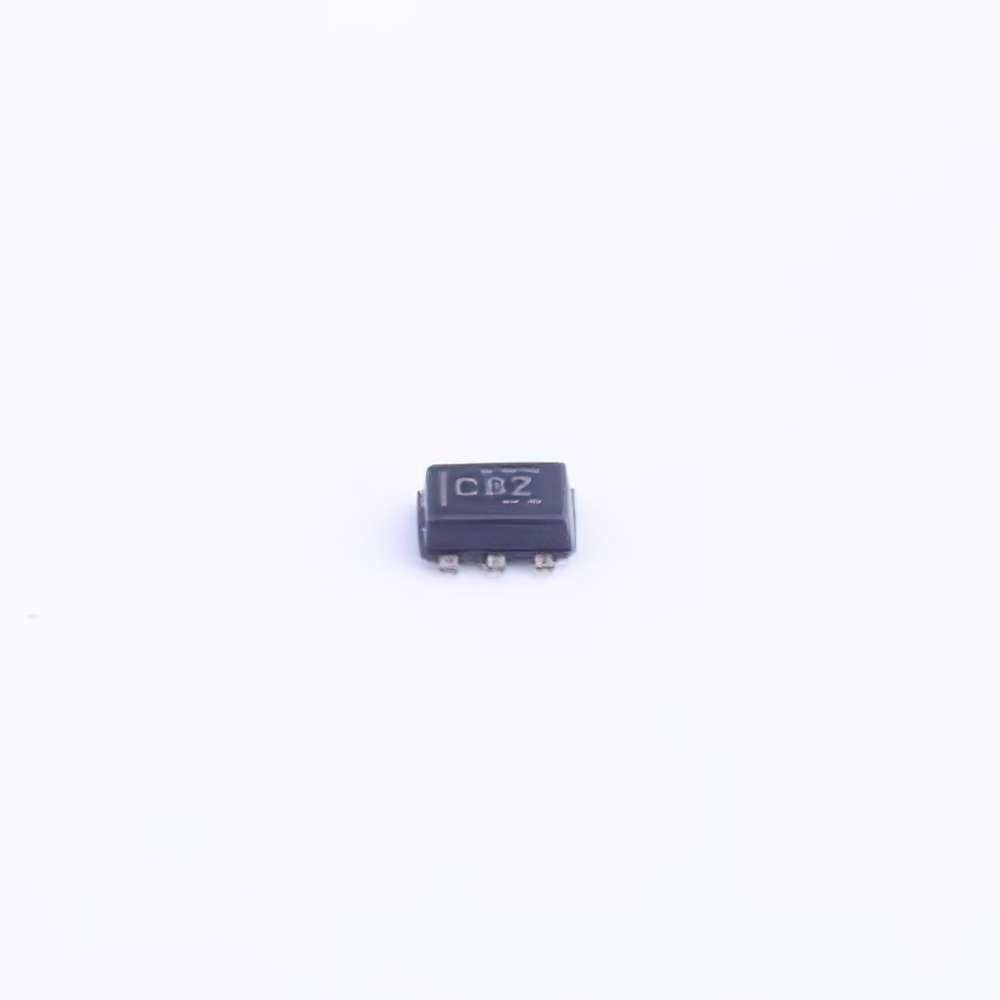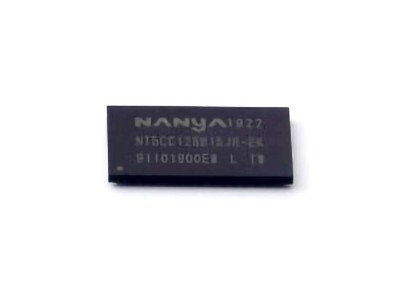
This article delves into the practical application and design example of the TMP102AIDRLR , a highly efficient and compact digital temperature Sensor , in real-time temperature monitoring systems. By explaining the features of the TMP102AIDRLR and its integration into real-world systems, this article provides valuable insights for engineers and developers looking to implement reliable and precise temperature sensing solutions in their projects.
TMP102AIDRLR, real-time temperature monitoring, digital temperature sensor, temperature sensor application, temperature sensing systems, IoT-based temperature monitoring, precision temperature monitoring, embedded systems, sensor design, temperature control.
Introduction to TMP102AIDRLR and its Features in Temperature Monitoring Systems
Temperature monitoring is a fundamental aspect of various applications in industries such as healthcare, industrial automation, data centers, and environmental monitoring. Precise temperature control and monitoring are vital for maintaining optimal conditions, preventing damage to sensitive equipment, and ensuring safety in many systems. As technology advances, digital temperature sensors like the TMP102AIDRLR from Texas Instruments are gaining traction for their ability to provide high-precision measurements with low Power consumption, making them an ideal choice for real-time temperature monitoring systems.
The TMP102AIDRLR is a low-power, high-precision, digital temperature sensor designed to provide accurate temperature measurements over a wide range of applications. This sensor offers a resolution of 0.0625°C and operates over a temperature range of -40°C to 125°C, which makes it suitable for both consumer electronics and industrial-grade applications. Additionally, the sensor features an I2C interface , simplifying its integration into a wide variety of systems. In this article, we explore the features and benefits of the TMP102AIDRLR and discuss how it can be applied to a real-time temperature monitoring system.
Key Features of the TMP102AIDRLR:
High Accuracy and Precision:
The TMP102AIDRLR boasts an accuracy of ±0.5°C in the range from 25°C to 85°C. Its 12-bit resolution provides fine measurement capabilities with a digital output, ensuring precise and reliable readings for various applications.
Low Power Consumption:
One of the standout features of the TMP102AIDRLR is its low power consumption. It operates with a supply voltage range of 1.4V to 3.6V and can be powered with as little as 30μA in active mode. This makes it ideal for battery-operated or energy-constrained applications, such as remote temperature sensors or IoT devices.
I2C Interface:
The TMP102AIDRLR communicates via the I2C protocol, a widely used and straightforward Communication method that allows multiple sensors to be connected to a single bus. This simplifies the system design and enables easy integration into more complex temperature monitoring networks.
Wide Operating Temperature Range:
With an operating range of -40°C to 125°C, the TMP102AIDRLR can be used in a diverse range of environmental conditions, making it suitable for automotive, industrial, and commercial applications.
Low Voltage Operation:
Its ability to operate at voltages as low as 1.4V further supports energy efficiency, which is crucial in battery-operated systems and portable devices.
Compact and Easy-to-Use:
The TMP102AIDRLR is available in small form factors, making it an ideal choice for systems with space constraints. It also integrates a temperature sensor, ADC (analog-to-digital converter), and digital interface all in a single package, reducing the need for multiple components.
Applications of TMP102AIDRLR in Real-Time Temperature Monitoring
Given its small size, low power consumption, and high precision, the TMP102AIDRLR can be applied to a wide range of real-time temperature monitoring applications. Some of the common use cases include:
Environmental Monitoring:
TMP102AIDRLR sensors can be used in environmental monitoring systems to track temperature fluctuations in real-time. For example, in agricultural settings, real-time temperature monitoring is crucial to ensure optimal conditions for plant growth and to prevent crop damage due to temperature extremes. Similarly, in smart buildings, real-time temperature sensing can help optimize energy usage and provide comfort to occupants.
Industrial Temperature Monitoring:
In industrial applications, the TMP102AIDRLR can be integrated into systems that monitor the temperature of machinery, equipment, and critical infrastructure. Real-time temperature monitoring helps identify potential overheating, preventing equipment failures and reducing downtime. In manufacturing plants, maintaining the right temperature is essential for product quality and safety.
Data Centers and IT Equipment:
Data centers house sensitive IT equipment that generates a significant amount of heat. Temperature sensors like the TMP102AIDRLR can be placed on or near equipment to monitor the temperature in real time. Overheating can lead to server failures, reduced lifespan, and system downtimes. Integrating the TMP102AIDRLR ensures better thermal management, which in turn helps maintain the efficiency and longevity of data center operations.
Battery-Powered Devices:
For portable and battery-powered devices, such as wearable health trackers or remote weather stations, low-power temperature sensors like the TMP102AIDRLR are crucial for ensuring long battery life while still providing accurate readings. The ability to operate at low voltage makes this sensor ideal for applications where energy efficiency is paramount.
Medical and Healthcare Applications:
Accurate temperature monitoring is essential in medical applications. The TMP102AIDRLR can be used to monitor the temperature of patients, medications, or critical medical devices. In scenarios where temperature-sensitive drugs or vaccines are involved, precise temperature control is necessary to ensure their effectiveness.
Design Considerations for Real-Time Temperature Monitoring Systems
When designing a real-time temperature monitoring system using the TMP102AIDRLR, several key considerations should be taken into account to ensure optimal performance:
Power Supply Design:
The TMP102AIDRLR operates within a voltage range of 1.4V to 3.6V, so it is important to select an appropriate power supply that meets these requirements while optimizing battery life for portable applications.
Sensor Placement:
The accuracy of temperature measurements can be affected by the placement of the TMP102AIDRLR. Careful consideration should be given to the sensor's location within the system, as thermal gradients, airflow, and other environmental factors can influence the sensor's readings.
Communication Interface:
The TMP102AIDRLR communicates using the I2C protocol, so the system should be designed to support I2C communication. For larger systems with multiple sensors, it is important to account for potential issues such as signal degradation and communication errors, and to ensure proper addressing of each device on the bus.
Calibration and Compensation:
Although the TMP102AIDRLR offers good accuracy out of the box, it may require calibration for specific applications. If the system is being deployed in environments with extreme temperature variations, additional compensation techniques may be necessary to maintain accuracy.
Real-Time Temperature Monitoring System Design Example Using TMP102AIDRLR
To better understand how the TMP102AIDRLR can be integrated into a real-time temperature monitoring system, let’s walk through a design example. In this example, we will build a simple temperature monitoring system that continuously measures and records temperature data for use in an industrial setting, such as a factory or data center. The system will leverage the I2C interface for communication and display real-time temperature readings on a graphical user interface (GUI) via a microcontroller or a Raspberry Pi.
System Overview and Components:
The system consists of the following components:
TMP102AIDRLR Digital Temperature Sensor:
The TMP102AIDRLR will be the core sensor of the system, responsible for measuring the ambient temperature and converting it into a digital output for further processing.
Microcontroller or Raspberry Pi:
A microcontroller (e.g., Arduino) or a Raspberry Pi will act as the central processing unit (CPU), responsible for controlling the sensor, processing temperature data, and sending it to the user interface for display.
I2C Bus:
The I2C protocol will be used to connect the TMP102AIDRLR sensor to the microcontroller. The microcontroller will read temperature data from the sensor and communicate with other system components.
LCD/GUI Display:
A simple LCD screen or a GUI on a Raspberry Pi will show the real-time temperature measurements.
Power Supply:
The system will need an appropriate power supply, capable of powering the TMP102AIDRLR and the microcontroller. For battery-powered applications, low power consumption is key to extending battery life.
Step-by-Step Design Process:
Circuit Design:
First, we need to design the circuit to connect the TMP102AIDRLR to the microcontroller. The TMP102AIDRLR has four pins: VDD (power supply), GND (ground), SDA (data), and SCL (clock). These pins will connect to the microcontroller’s I2C interface. Additionally, an optional pull-up resistor might be needed on the SDA and SCL lines to ensure proper signal integrity.
Sensor Initialization and Configuration:
Once the TMP102AIDRLR is connected to the microcontroller, the next step is to initialize the sensor by sending an I2C command to configure it for continuous temperature measurement mode. This will involve setting the appropriate registers on the TMP102AIDRLR for measurement resolution, sample rate, and other parameters.
Reading Temperature Data:
After configuring the sensor, the microcontroller will continuously poll the TMP102AIDRLR for temperature data. The sensor provides temperature readings in a 12-bit format, which the microcontroller can process. A conversion algorithm will be used to transform the raw data into temperature in Celsius or Fahrenheit.
Displaying Temperature Data:
The temperature data can then be displayed on an LCD screen or sent to a connected PC via a GUI. For this, a Python script or a similar program can be used to display the real-time temperature readings. In an industrial setting, this could also involve logging data for analysis and reporting.
System Testing and Calibration:
Once the system is operational, the final step is testing and calibration. The sensor's output should be verified against known temperature sources to ensure accuracy. If necessary, calibration procedures can be applied to fine-tune the readings.
Conclusion:
Incorporating the TMP102AIDRLR into a real-time temperature monitoring system offers numerous advantages, including high precision, low power consumption, and ease of integration via I2C communication. Whether for industrial applications, environmental monitoring, or healthcare, the TMP102AIDRLR sensor is an excellent choice for real-time temperature measurement. By following the outlined design steps, engineers can create reliable temperature monitoring systems capable of operating in diverse conditions.
If you are looking for more information on commonly used Electronic Components Models or about Electronic Components Product Catalog datasheets, compile all purchasing and CAD information into one place.

